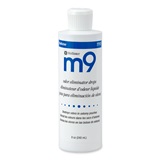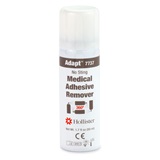Essential Hygiene and Peristomal Skin Care Tips
Good daily hygiene and skin care routines help to promote healthy peristomal skin. Take care of yourself with this essential knowledge.

Get peristomal skin care and hygiene tips.
After your ostomy surgery, it is important that you know how to take care of yourself at home. That includes physical hygiene and caring for the skin around your stoma. Explore these essential tips.
Peristomal skin care
The skin around the stoma is called the peristomal skin. Here are some practical tips for keeping it healthy:
- Get into the habit of cleaning the peristomal skin each time you change your barrier
- For most people, water is sufficient for cleaning the skin. Less is better when caring for the skin around the stoma. If you prefer to use soap, it is usually best to use one without moisturizers, fragrance and perfumes, since this may interfere with the skin barrier adhesion.
- If you discover red, broken, or moist skin around the stoma, contact your ostomy care nurse or healthcare professional
- Examine your peristomal skin regularly to check for any changesand ensure it looks healthy
The peristomal skin should remain intact without irritation, rash, or redness. It should look like the skin anywhere else on your body.
Bathing and showering
With an ostomy, you can shower or bathe just as you did before. Soap and water will not flow into your stoma or hurt it in any way.
Here are some helpful tips:
- You can shower or bathe with your pouch on or off – the choice is yours. However, removing the pouch from a two-piece system before showering may weaken the skin barrier adhesion.
- If you find the skin barrier adhesion weakening, it is best to leave the pouch on or remove both the pouch and skin barrier.
- Soap residue can sometimes interfere with how well the skin barrier sticks to your skin, so choose a cleansing product that’s free of residues, moisturizers, and oils
- If you use a two-piece pouching system, you may want to switch to a different pouch for the shower. That way you can keep the one you usually wear dry.
Follow these tips to help keep your pouching system secure and your skin barrier adhesion strong so you can bathe and shower with confidence.
- 15 Shares
- 287 Recommended





 Call Us
Call Us  Email Us
Email Us  Join Us!
Join Us!  Sign Up
Sign Up 